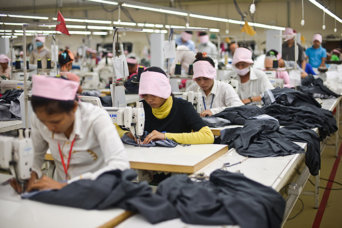- About
- Topics
- Picks
- Audio
- Story
- In-Depth
- Opinion
- News
- Donate
- Signup for our newsletterOur Editors' Best Picks.Send
Read, Debate: Engage.
| located: | Cambodia |
|---|---|
| editor: | Murat Suner |
On April 24, two years ago, the Rana Plaza building, a garment factory in Bangladesh, collapsed with 3,649 workers - at least 1,137 of them died. It is, to date, the deadliest disaster in the history of the garment industry worldwide.
In March this year, Human Rights Watch (HRW) conducted research on Cambodian garment industry including 273 factories. According to this research Cambodia’s government should improve enforcement of its labor law to remedy rights violations in the garment industry. In a letter to the country's Prime Minister Hun Sen HRW said the government should improve coordination between different ministries to ensure that all garment factories are registered and regularly monitored by labor inspectors.
“We welcome more transparency around government measures to hold factories accountable,” said Nisha Varia, women’s rights advocacy director at Human Rights Watch. “But the government should also publicly disclose the names of factories, the labor rights violations found, amount of fine imposed on each factory, and whether it was actually paid by the factory.”
The Ministry of Labor and Vocational Training said that it “greatly regrets and would like to reject” Human Rights Watch’s report “‘Work Faster or Get Out’: Labor Rights Abuses in Cambodia’s Garment Sector.”
Human Rights Watch stands by its research, which includes interviews with 270 workers across 73 factories in 5 provinces, and which corroborated findings by independent monitors such as Better Factories Cambodia and the International Labor Organization.
For further information see: Clean clothes report
